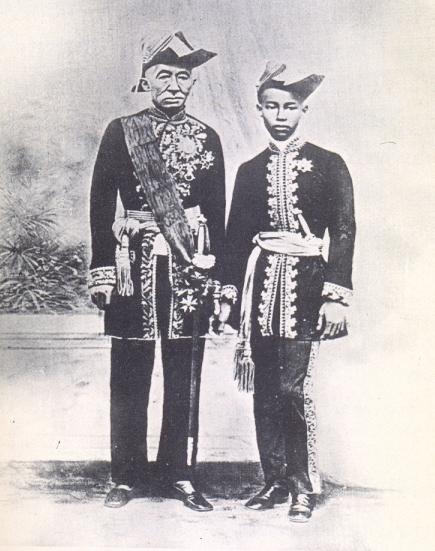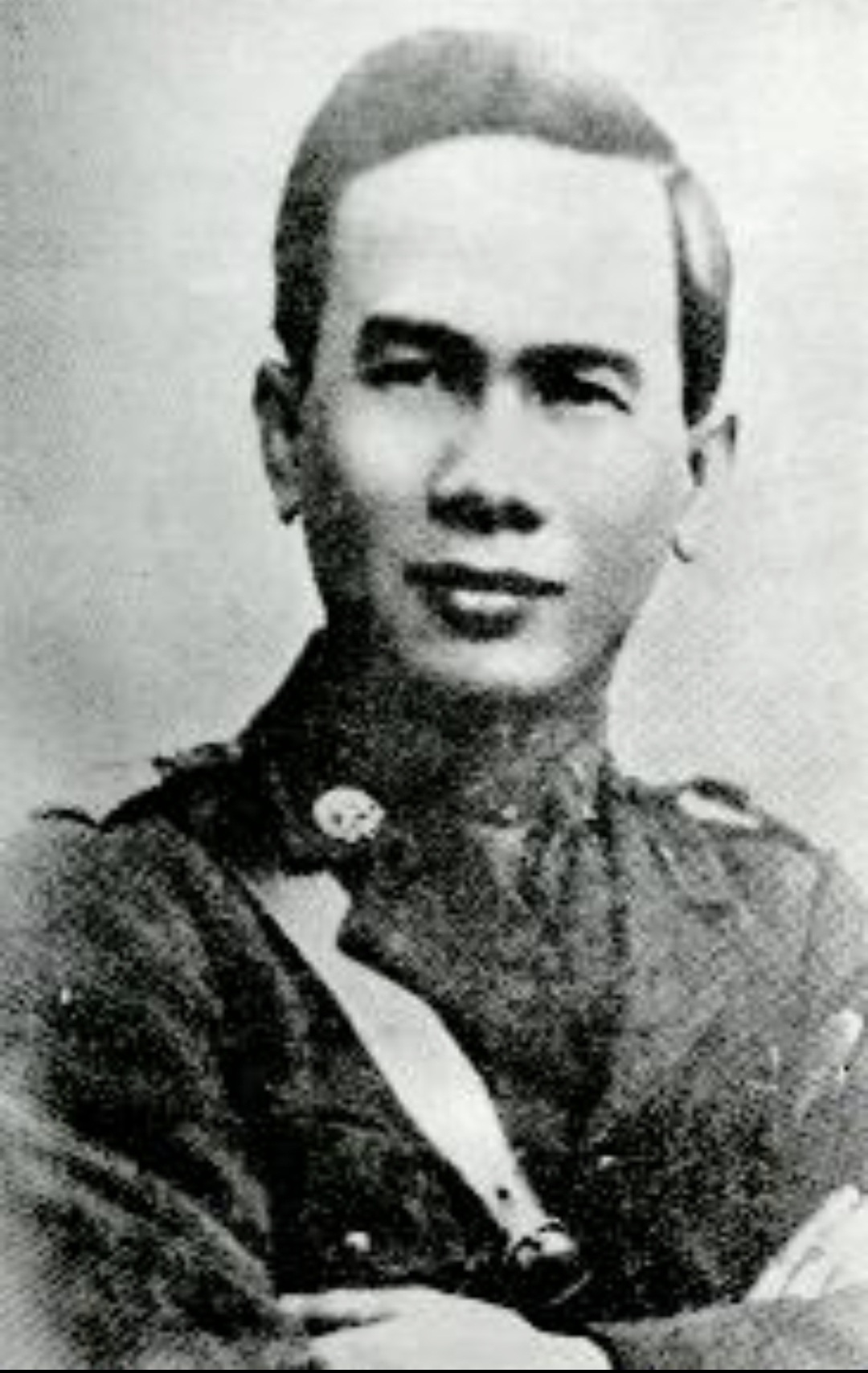|
Sukhaphiban
Sukhaphiban (; translated as "sanitary district") were administrative divisions of Thailand. Sanitary districts were the first sub-autonomous entities established in Thailand. A first such district was created in Bangkok by a royal decree of King Chulalongkorn in 1897. The king had learned about the sanitary districts in England during his European trip earlier that year, and he wanted to try this local administration in his country as well. Tha Chalom District became the second such district, created in 1906 and responsible for parts of Mueang Samut Sakhon District, Samut Sakhon Province. In 1907 the act on operations of sanitary districts codified the regulations, and with the ''Local Administration Act'' of 1914 two levels of sukhaphiban were introduced, the ''sukhaphiban mueang'' for towns and ''sukhaphiban tambon'' for rural areas. The number of sanitary districts grew to 35 in 1935, when these however were converted into municipalities ('' thesaban''). New sanitary distric ... [...More Info...] [...Related Items...] OR: [Wikipedia] [Google] [Baidu] |
Chulalongkorn
Chulalongkorn (20 September 1853 – 23 October 1910), posthumously honoured as King Chulalongkorn the Great, was the fifth king of Siam from the Chakri dynasty, titled Rama V. Chulalongkorn's reign from 1868 until his death in 1910 was characterised by the modernisation of Siam, governmental and social reforms, and territorial concessions to the British and French empires. As Siam was surrounded by European colonies, Chulalongkorn, through his policies and acts, ensured the independence of Siam. Chulalongkorn was born as the son of Mongkut, the fourth king of Siam. In 1868, he travelled with his father and Westerners invited by Mongkut to observe the solar eclipse of 18 August 1868 in Prachuap Khiri Khan Province. However, Chulalongkorn and his father both contracted malaria which resulted in his father's death. The 1893 Franco-Siamese crisis and Haw wars took place during his reign. All his reforms were dedicated to ensuring Siam's independence given the increasing ... [...More Info...] [...Related Items...] OR: [Wikipedia] [Google] [Baidu] |
Sanitary District
Sanitary districts were established in England and Wales in 1872 and in Ireland in 1878. The districts were of two types, based on existing structures: *Urban sanitary districts in towns with existing local government bodies *Rural sanitary districts in the remaining rural areas of poor law unions. Each district was governed by a sanitary authority and was responsible for various public health matters such as providing clean drinking water, sewers, street cleaning, and clearing slum housing. In England and Wales, both rural and urban sanitary districts were replaced in 1894 by the Local Government Act 1894 ( 56 & 57 Vict. c. 73) by the more general rural districts and urban districts. A similar reform was carried out in Ireland in 1899 by the Local Government (Ireland) Act 1898. England and Wales Sanitary districts were formed under the terms of the Public Health Act 1872 ( 35 & 36 Vict. c. 79). Instead of creating new bodies, existing authorities were given additional res ... [...More Info...] [...Related Items...] OR: [Wikipedia] [Google] [Baidu] |
Thesaban
Thesaban (, , , Pali: desapāla (protector of region) are the municipalities of Thailand. There are three levels of municipalities: city, town, and sub-district. Bangkok and Pattaya are special municipal entities not included in the ''thesaban'' system. The municipalities assume some of the responsibilities which are assigned to the districts (''amphoe'') or subdistricts (''tambon'') for non-municipal (rural) areas. Historically, this devolution of central government powers grew out of the Sukhaphiban () sanitary districts first created in Bangkok by a royal decree of King Chulalongkorn in 1897. The ''thesaban'' system was established in the Thesaban Organization Act of 1934 (),The Royal Gazetteพระราชบัญญัติจัดระเบียบเทศบาล พุทธศักราช ๒๔๗๖, Vol. 51, Page 82-107.24 Apr 1934. Retrieved on 28 Nov 2008. and has been updated several times since, starting with the Thesaban Act of 1939 (),The Royal ... [...More Info...] [...Related Items...] OR: [Wikipedia] [Google] [Baidu] |
Thesaban Tambon
Thesaban (, , , Pali, Pali: desapāla (protector of region) are the municipalities of Thailand. There are three levels of municipalities: city, town, and sub-district. Bangkok and Pattaya are special municipal entities not included in the ''thesaban'' system. The municipalities assume some of the responsibilities which are assigned to the districts (''amphoe'') or subdistricts (''tambon'') for non-municipal (rural) areas. Historically, this devolution of central government powers grew out of the Sukhaphiban () sanitary districts first created in Bangkok by a royal decree of King Chulalongkorn in 1897. The ''thesaban'' system was established in the Thesaban Organization Act of 1934 (),The Royal Gazetteพระราชบัญญัติจัดระเบียบเทศบาล พุทธศักราช ๒๔๗๖, Vol. 51, Page 82-107.24 Apr 1934. Retrieved on 28 Nov 2008. and has been updated several times since, starting with the Thesaban Act of 1939 (),The Roy ... [...More Info...] [...Related Items...] OR: [Wikipedia] [Google] [Baidu] |
Mueang
Mueang ( Ahom: 𑜉𑜢𑜤𑜂𑜫; ''mɯ̄ang'', ), Muang ( ''mɯ́ang'', ), Möng ( Tai Nuea: ᥛᥫᥒᥰ ''möeng''; ''móeng'', ), Meng ( zh, c=猛 or 勐) or Mường (Vietnamese) were pre-modern semi-independent city-states or principalities in mainland Southeast Asia, adjacent regions of Northeast India and Southern China, including what is now Thailand, Laos, Burma, Cambodia, parts of northern Vietnam, southern Yunnan, western Guangxi and Assam. Mueang was originally a term in the Tai languages for a town having a defensive wall and a ruler with at least the Thai noble rank of '' khun'' (), together with its dependent villages. The mandala model of political organisation organised states in collective hierarchy such that smaller mueang were subordinate to more powerful neighboring ones, which in turn were subordinate to a central king or other leader. The more powerful mueang (generally designated as , , , or – with Bangkok as ''Krung'' Thep Maha ''Nakhon'') occ ... [...More Info...] [...Related Items...] OR: [Wikipedia] [Google] [Baidu] |
Thailand
Thailand, officially the Kingdom of Thailand and historically known as Siam (the official name until 1939), is a country in Southeast Asia on the Mainland Southeast Asia, Indochinese Peninsula. With a population of almost 66 million, it spans . Thailand Template:Borders of Thailand, is bordered to the northwest by Myanmar, to the northeast and east by Laos, to the southeast by Cambodia, to the south by the Gulf of Thailand and Malaysia, and to the southwest by the Andaman Sea; it also shares maritime borders with Vietnam to the southeast and Indonesia and India to the southwest. Bangkok is the state capital and List of municipalities in Thailand#Largest cities by urban population, largest city. Tai peoples, Thai peoples migrated from southwestern China to mainland Southeast Asia from the 6th to 11th centuries. Greater India, Indianised kingdoms such as the Mon kingdoms, Mon, Khmer Empire, and Monarchies of Malaysia, Malay states ruled the region, competing with Thai states s ... [...More Info...] [...Related Items...] OR: [Wikipedia] [Google] [Baidu] |
Amphoe Mueang Samut Sakhon
Mueang Samut Sakhon (, ) is the capital district ('' amphoe mueang'') of Samut Sakhon province, central Thailand. History ''Mueang'' Tha Chin dates back to the Ayutthaya Kingdom. The city was managed by the Defence ministry. King Maha Chakkraphat ordered ''Mueang'' Sakhon Buri to be established. King Mongkut (Rama IV) changed the city name to Samut Sakhon. In 1897 Mueang Samut Sakhon a district. Locals still refer to Mueang Samut Sakhon district by its old name, ''Mahachai''. In addition to being called Mahachai, Samut Sakhon also has another name in Teochew dialect, ''Lang-Ka-Su'' ( zh, 龍仔厝; pinyin: ''Lóng zǐ cuò''), literally means 'home of dragon descendants'. The name mentioned in Chinese historical records for more than 1,000 years. Therefore, it is assumed that Mueang Samut Sakhon was home to the Chinese (included Thai of Chinese descent) for a long time, because the location in this area is directly at the Tha Chin River mouth. Therefore, it is especially suit ... [...More Info...] [...Related Items...] OR: [Wikipedia] [Google] [Baidu] |
Samut Sakhon Province
Samut Sakhon (, ) is one of the central provinces (''changwat'') of Thailand, located along the coast of the Gulf of Thailand. In 2024, it had a population of 590,867, and an area of 866 km², making it the 43rd most populated province whilst being the 4th smallest. Toponymy The word ''samut'' originates from the Sanskrit word ''samudra'' meaning 'ocean', and the word ''sakhon'' from Sanskrit ''sagara'' meaning 'lake'. Geography Neighboring provinces are (from the southwest clockwise) Samut Songkhram, Ratchaburi, Nakhon Pathom, and Bangkok. Samut Sakhon is part of the Bangkok Metropolitan Region. Samut Sakhon is at the mouth of the Tha Chin River, a distributary of the Chao Phraya River, to the Gulf of Thailand. At the coast are many salt pans used for harvesting sea salt. The total forest area is or 4.9 percent of provincial area. Climate Samut Sakhon province has a tropical savanna climate (Köppen climate classification category Aw). Winters are dry and warm. Temperat ... [...More Info...] [...Related Items...] OR: [Wikipedia] [Google] [Baidu] |
Phibun Songkhram
Plaek Phibunsongkhram; 14 July 1897 – 11 June 1964) was a Thai military officer and politician who served as the third prime minister of Thailand from 1938 to 1944 and again from 1948 to 1957. He rose to power as a leading member of the Khana Ratsadon, becoming prime minister in 1938 and later consolidating his influence as a military dictator. His regime allied with the Empire of Japan during the Second World War, and his administration was marked by authoritarian policies and the promotion of Thai nationalism. He was closely involved in both domestic reforms and foreign policy during the war and played a central role in shaping modern Thai state ideology. Phibun was a member of the army wing of Khana Ratsadon, the first political party in Thailand, and a leader of the Siamese revolution of 1932, which replaced Thailand's absolute monarchy with a constitutional monarchy. Phibun became the third Prime Minister of Thailand in 1938 while serving as List of Commanders of the Ro ... [...More Info...] [...Related Items...] OR: [Wikipedia] [Google] [Baidu] |
Kamnan
A ''kamnan'' () is a Thai governing official at the tambon ''Tambon'' (, ) is a local governmental unit in Thailand. Below district (''amphoe'') and province ('' changwat''), they form the third administrative subdivision level. there were 7,255 tambons, not including the 180 ''khwaeng'' of Bangkok, whi ... (subdistrict) level. Its official English translation is "subdistrict headman". The position of a kamnan was introduced with the ''Thesaphiban'' administrative reforms near the end of the 19th century, first enacted in 1892. The kamnan would be chosen from among the village elders (phu yai ban) of the villages that make up the tambon. Originally, it was a lifetime post, but now is for a fixed term. The kamnan's main task was to implement the policies of the higher administrative levels, and he was the main point of government contact for the people of the tambon. With the ''Tambon Council and Tambon Administrative Authority Act BE 2537'' (1994), the tambon assumed a role in ... [...More Info...] [...Related Items...] OR: [Wikipedia] [Google] [Baidu] |





